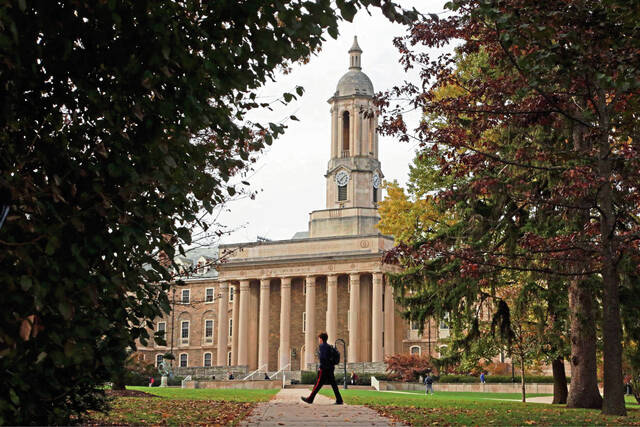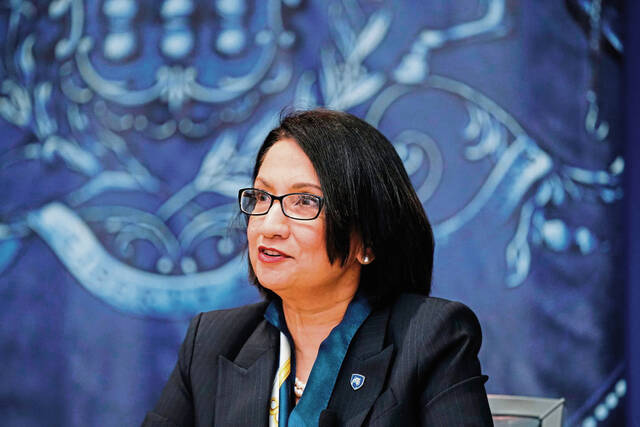Penn State main campus students face tuition hike; price at branch campuses still frozen
Pennsylvanians attending Penn State University’s main campus a year from now will pay 2% more in undergraduate tuition, while in-state branch campus undergraduates will see no increase for a third straight year.
The university’s Board of Trustees Friday approved those and other rates in adopting a $9.9 billion budget for 2025-26. The various prices cover 88,000 students at University Park, the 20 branches or Commonwealth campuses as Penn State calls them, plus other specialized locations statewide.
Trustees met a week after Pennsylvania legislators passed a fiscal 2025 budget, which provided no general increase in aid for state-related universities, including Penn State. It will receive $242 million in general support, unchanged in five years.
On Thursday, the trustees’ Committee on Finance, Business and Capital Planning had endorsed the new rates that mirror ones already in force for the upcoming 2024-25 academic year. Penn State, a year ago, switched to a two-year budgeting model, meaning tuition prices this fall were set last summer.
Friday’s vote means in-state, lower division tuition at University Park will climb by $402 to $20,468 a year. Out-of-state undergraduates will pay $42,860 a year, an increase of 4% or $1,640.
That does not include room and board prices, which were also set Friday for 2025-26 as the trustees met at Penn State Altoona.
Tuition rates vary on the 20 branches but will hold steady for in-state students. In Southwestern Pennsylvania, that means a $13,824 yearly rate remains in force at Penn State New Kensington, Penn State Greater Allegheny, Penn State Beaver and Penn State Fayette, the Eberly campus.
University leaders, meanwhile, say they are on target to balance the $2.9 billion education and general portion of Penn State’s budget, following tens of millions of dollars in spending reductions, improved efficiency and new revenue development.
The cuts, some highly controversial, began shortly after Neeli Bendapudi became Penn State president in 2022.
For 2025-26, it meant cuts or reallocation of $89 million, including $11 million for academic colleges, $29 million for administrative and student-support units, and $49 million for the branch campuses, which have seen sharp enrollment losses.
“This has been remarkably challenging because we have had flat funding … I believe five straight years … from the state,” Bendapudi told the board Friday. “So, when you are flat-funded in an inflationary environment — look at health care costs, look at the cost of construction, look at personnel costs. That is very difficult to manage.”
But some trustees felt more could have been done to curb tuition prices, even as expenses were being pared.
“I would hope that we could do that without a tuition increase on in-state students at University Park. We clearly have funds to be able to do that,” said Edward “Ted” B. Brown III.
He and trustees Barry Fenchak. Anthony Lubrano and Matthew McGloin voted against the spending plan and tuition rates.
The branches over the past 10 years have seen enrollment drops totaling 24%, with all but two locations absorbing losses of between 16% and 50%.
Academic programs there are under review, leadership is being regionalized and a buyout offer to Commonwealth campus faculty and staff in May led 383 employees, or about 21% of those who were eligible statewide, to voluntarily leave. About 77% of them are staff.
The worry on those campuses has coincided with a different reality on the main campus, where demand remains strong.
But at least one branch campus will benefit from a major capital investment.
Trustees Friday approved construction of a $68 million academic building at Penn State Abington, near Philadelphia. The campus of 3,095 students is seen as ripe for growth and has weathered the enrollment downturn better than most, officials said.
The project is the first there in half a century and will be financed primarily by debt.
The 2025-26 budget also sets graduate tuition rates across the system.
On the main campus, graduate tuition will increase by 2% for Pennsylvanians and 4% for those from out of state. Graduate rates will increase by 1% and 2% for in-state and out-of-state students respectively on those campuses.
The budget includes a 3% pool or $83 million university-wide, for annual employee pay increases. Graduate assistant stipends would increase in value by 4%, starting with fall 2025 appointments, and financial aid is being increased to help offset prices increases, officials said.
“Our new budget model is allowing us to be more strategic and data-driven with how we allocate our resources,” said Sara Thorndike, the university’s senior vice president for finance and business/treasurer. “The fact that we achieved our goal of a balanced E&G budget within three years shows the power of our community, and Penn State is in a stronger financial position today because of this critical work.”
Remove the ads from your TribLIVE reading experience but still support the journalists who create the content with TribLIVE Ad-Free.


